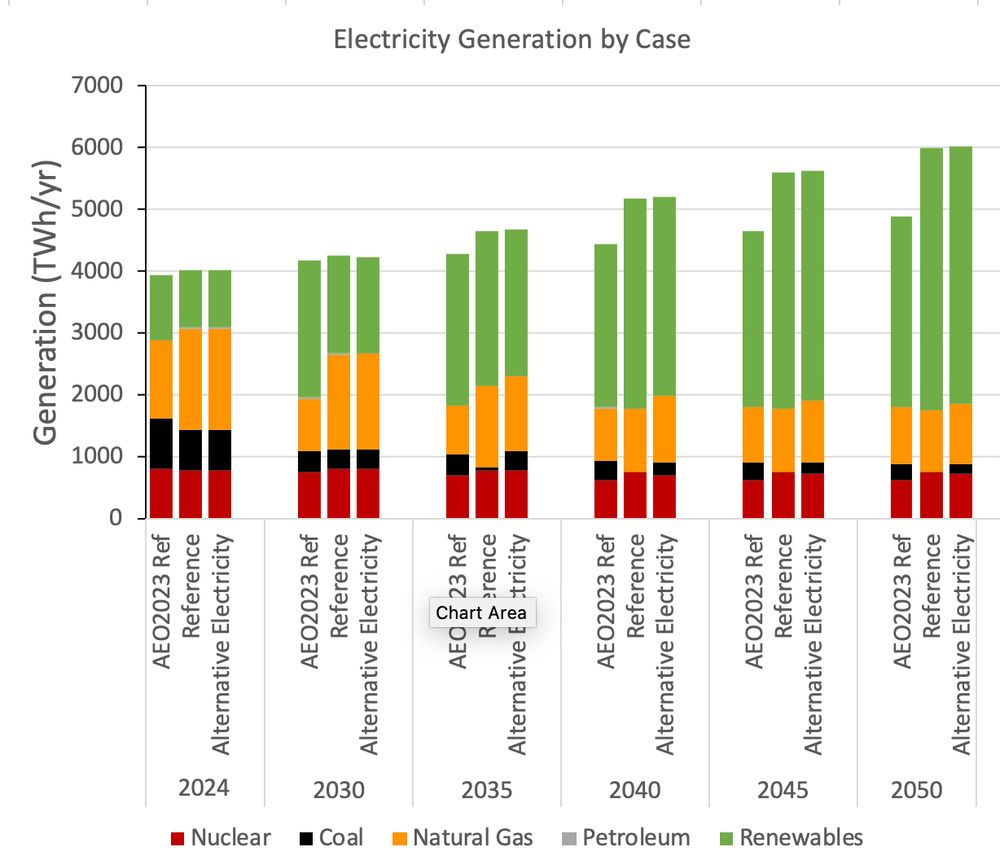
(Looks like it hasn't been updated with AEO2025 data yet.)

(Looks like it hasn't been updated with AEO2025 data yet.)
The EIA Retrospective Report, released every other year, calculates statistics across previous AEO editions: www.eia.gov/outlooks/aeo...
The EIA Retrospective Report, released every other year, calculates statistics across previous AEO editions: www.eia.gov/outlooks/aeo...
Again, I appreciate the dedication of EIA staff to produce the AEO under challenging circumstances.
And remember EIA's transparency. Don't like a result? Run NEMS with your own assumptions: github.com/EIAgov/NEMS

Again, I appreciate the dedication of EIA staff to produce the AEO under challenging circumstances.
And remember EIA's transparency. Don't like a result? Run NEMS with your own assumptions: github.com/EIAgov/NEMS






Here’s renewables. (Unfortunately, wind and solar are lumped together in the tables.) Note the marked increases in renewable generation and slowdown in later years when the IRA tax credits expire.

Here’s renewables. (Unfortunately, wind and solar are lumped together in the tables.) Note the marked increases in renewable generation and slowdown in later years when the IRA tax credits expire.

In AEO2025, 1 unit of solar or wind electricity = 1 unit of primary energy. So 1 unit of solar or wind displacing 1 unit of fossil electricity reduces fossil primary energy by 2-3 units (2nd Law).
In AEO2025, 1 unit of solar or wind electricity = 1 unit of primary energy. So 1 unit of solar or wind displacing 1 unit of fossil electricity reduces fossil primary energy by 2-3 units (2nd Law).
Renewables, mostly solar and wind, are an increasing share of the electricity mix. End-use electrification is also increasing. What does that have to do with primary energy?

Renewables, mostly solar and wind, are an increasing share of the electricity mix. End-use electrification is also increasing. What does that have to do with primary energy?

